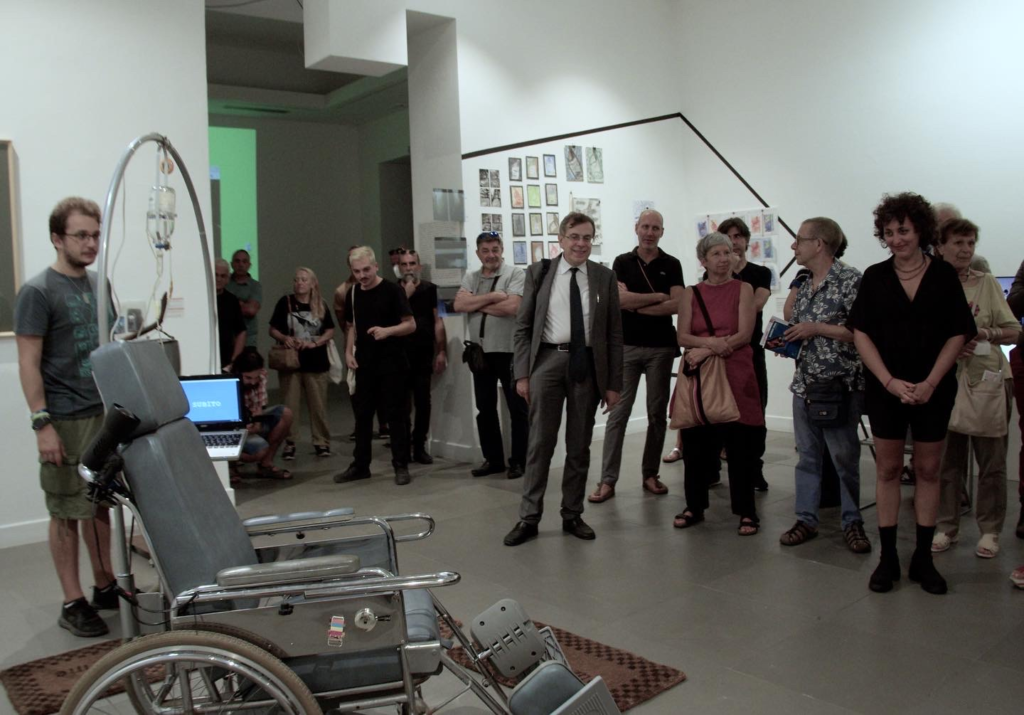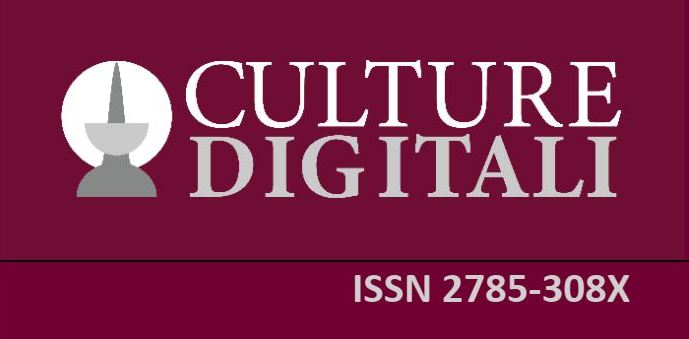Anna Maria Monteverdi, Prof. Associato-Storia del Teatro. Dipartimento Beni Culturali e Ambientali Università Statale di Milano.


In occasione della Giornata Europea del Patrimonio che quest’anno aveva come parola chiave la sostenibilità, il Museo della Spezia CAMeC ha accolto una proposta di “restyling” tecnologico sostenibile di un’installazione interattiva del 1997 non più funzionante in prestito dal Museo di Gallarate e presente all’interno della mostra Liberare Arte da Artisti dedicata al tecnoartista Giacomo Verde scomparso nel 2020. Lorenzo Antei studente dell’Accademia di Belle Arti di Carrara è intervenuto lavorando sui principi della sostenibilità, del riuso e della tecnologia open-source. L’opera finalmente funzionante è stata esposta il 25 settembre in occasione del GEP.


Every year in the middle of September, the Italian Ministry for cultural heritage and activities takes part in the European Heritage Days, a project promoted since 1991 by the European Council and by the European Commission, with the aim of improving and encouraging dialogue and exchange between European countries, within a cultural sphere. This year has been celebrated Sustainable Heritage. Sustainable Heritage means waste reduction and re-usable materials for art and its practices. The art world have started thinking seriously about sustainability which it has become a goal in all sectors to preserve our planet. Can technology-based artworks achieve sustainability also? In the digital arts, there is no guarantee that work will be preserved for any time after it has been created: all works are subject to deterioration and obsolescence due to technological progress.

Giacomo Verde (1956-2020) was one of the first Italians to create interactive art works and net-art. His works are characterized by the employment of low-technology equipment, a choice motivated both by ethical and political stances and the will to share his creative practices making them accessible to everyone. For the exhibition Giacomo Verde: Set Art free from Artists at CAMeC (La Spezia, 25th June 2022-15th January 2023) a young artist from Academy of fine arts (Carrara), Lorenzo Antei together with curators, has decided to make an experiment restoring his art productions from 90’s that incorporated analog or digital media; these works were constructed through components that were deteriorate physically and mechanically, and Lorenzo Antei has reused old material and open source technologies to restart the interactive installation. The experiment was to take defunct technology and migrate it onto a new machine and the goal was to take into account the relationship between the characteristics of the old technologies and the practices of their use by audiences nowadays, reconstructing works that are partly lost or obsolete. He has looked to the technological artefacts from an ecological angle to revisit the artwork’s identity of an analog or digital format; it’s a creative re-use of it from a sustainability point of view. This began by designing a system using an Open Frame Works program to control interactivity that could talk to an Arduino Microcontroller in order to send commands to the motors. Arduino is an open-source electronics platform based on easy-to-use hardware and software for making interactive projects. Arduino senses the environment by receiving inputs from many sensors, and affects its surroundings by controlling lights, motors, movements. Antei was inspired by the Verde’s esthetics, thinking of his reflections about the value of open access technology: “For me those programmers who create communication programs, or with open code, are really artists, which are then socialized becoming tools for communication and elaboration of a collective thought”. The artwork by Giacomo Verde (Reperto Antropologico 1997, Museo di Gallarate) at CAMeC is a mobile wheelchair equipped with a portable computer which moved around thanks to the sensors: chair is surrounded by “Welcome” doormats. On the screen of the portable computer we read “Back Soon”: a self-produced screen-saver. Attached to the wheelchair are other paraphernalia which indicate that this is a chair which someone lives in. If a visitor sits down on it, the chair begins to swivel and they can make the portable computer go online. This is a house-cum-computer. With the increase in electronic connections, living spaces are getting smaller and smaller, until they are reduced to just a chair; we are looking at a work of assembly, a work by a “prosumer”. The concept of a work of art extends to everyday life where each of us can connect to the world and relate to communities. The era was 1997 when the Internet represented the utopia of democracy par excellence. The small chair-house became the window to the world and art can no longer be enclosed in the wall of a museum. Since the mechanical and interactive parts no longer worked, it was decided to use the keyword “sustainability” for the restoration: since the artist used to create with domestic, poor, low-cost technology, the idea was to reuse the mechanism for automatic opening of the gates. Automatic gates work thanks to a control unit that receives the signal sent by the remote control; the control unit controls the motor and activates it to move the leaf with a mechanical arm. Automatic gates use sensors (photocells), which signal the control unit if there are obstacles for the correct closing of the door, such as for example a person who is trying to enter. Similarly, in the artwork the chair moves or stops if someone sits down near the sensors or gets up. A restoration therefore which took into account the idea of sustainability of the work, recycling of material no longer used and not wasting new technology. Lorenzo Antei worked to design and reconstruct a new hardware and software which were an integral part of the artwork itself.

When we think about art conservation, reassembling a painting or a sculpture may come to mind. But also digital art requires specific care for creating a system to faithfully reproduce the condition, the timing and behavior of the original hardware. Even for these restoration interventions, a creative mind is needed that can respect the philosophy with which the work was born, also respecting the idea of sustainability that appears more and more as an ethical imperative for every activity. The artwork and its restoration was finally presented working, on the occasion of the European Heritage Days on 25 September 2022 at CAMeC (La Spezia) as emblematic of the topics of sustainability in art.

